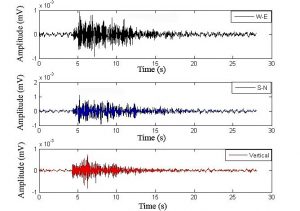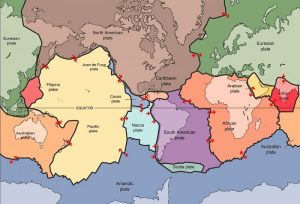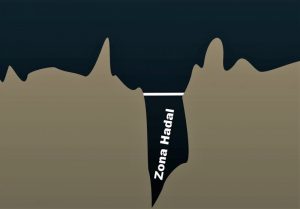Seismology
Disturbances within the Earth's interior, which is in a constant state of motion, result in the release of energy in packets known as seismic waves. The area of geophysics known as seismology, is the study of these waves and their effects, which can often be devastating when they manifest in the form of earthquakes. The earthquakes not only take human lives and destroy buildings, but also produce side effects, most often in the form of tsunamis. Using seismographs and seismometers, seismologists study earthquakes and other seismic phenomena, including volcanoes, and even explosions resulting from nuclear tests. They measure earthquakes according to their magnitude or energy, as well as their human intensity or impact.
What is seismology?
Seismology is the branch of geophysics that is responsible for studying earthquakes that occur on earth, mainly by studying the different seismic waves that are produced when energy is released during the earthquake.
What does seismology study?
Earthquakes occur when faults collide or magma splits into the crust. When earthquakes happen, they send seismic waves through the Earth. Seismographs are the instruments that seismology uses to record seismic waves. They contain a weight and a pen connected to a dock. The seismograph is screwed to the ground, so during an earthquake, it moves with the ground, while the weight and feather remain still. The feather moves through a rotating paper roll that records the seismic waves. This is known as a seismogram and is used to understand earthquakes.
During an earthquake, seismic waves arrive first at the nearest seismograph and then at the farthest. This information is used to locate the earthquake. In this way, through seismology, the tremors produced by the displacements of the plates can be evaluated and the propagation of the waves can be studied.
Thanks to seismology, earthquakes began to be classified according to their magnitude by means of the Richter scale and the Mercalli scale. In many countries around the world, there are organizations and institutions dedicated to the study of seismology to record all types of information, analyze it, store it and conduct studies on this type of movements.
What is seismology for?
Seismology serves us to make studies regarding earthquakes that happen on the earth. It is a science created to observe the different vibrations that occur naturally in earth and has been useful in understanding how tectonic plates work, the internal structure of the earth, understanding the origin of earthquakes, and how the earth releases energy.
Importance
Seismology is important because it helps experts carry out studies about earth movements, tectonic plates and the possible damage that an earthquake or seism could cause. In addition, seismology helps to understand continental slopes that can also cause earthquakes. It is a science that allows the study of artificial earthquakes produced by industrial activities. And finally, it helps to study the subsoil of a country and determine how the earth’s crust is formed.
Featured seismologists
Some of the world’s leading seismologists are:
- The seismologist of the University of Chile, Armando Cisternas.
- Beno Gutenberg, a German who managed to define the diameter of the earth. Contributor to the development of the Richter scale.
- Hiroo Kanamori
- Giuseppe Mercalli
- John Milne
Seismology in the world
There are different institutes that are in charge of informing the inhabitants of the world about the earthquakes that occur during the day. Among the most important are the USGS seismic hazards program, OVSICORI in Costa Rica, and the National Seismological Service of Mexico.
Seismology by country
- Chile: It is a country with a high seismicity, most of great intensity. This happens because they are located in the Pacific Fire Belt. They have the National Seismological Center of the University of Chile. They are in charge of giving daily technical reports on the earthquakes that occur in the country. They give data on the epicenters, hypocenters, time and magnitude of these.
- Colombia: Although it is not a very seismic country, the Colombian geological service is in charge of giving the news about the earthquakes that happen in the country. They provide an information service on the seismic, volcanic and geoscientific activity of the country.
- Japan: It is the country in which more earthquakes and earthquakes occur worldwide. It is located under the Pacific belt of fire. They have the Japanese meteorological agency that issues advice and warnings. It alerts the population several seconds before an earthquake occurs.
How to cite this article?
Briceño V., Gabriela. (2019). Seismology. Recovered on 23 February, 2024, de Euston96: https://www.euston96.com/en/seismology/










